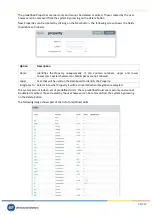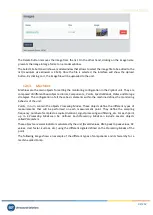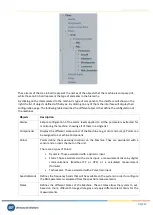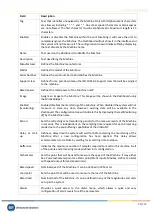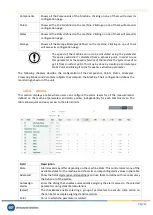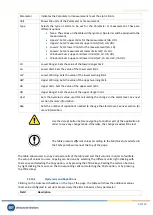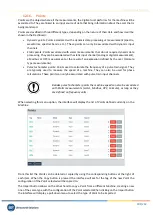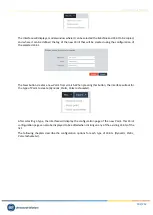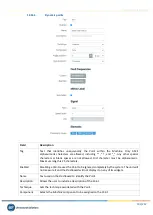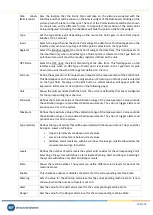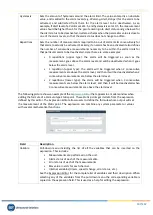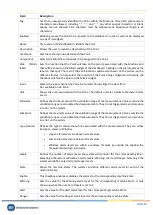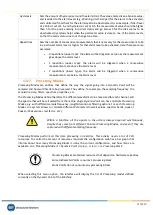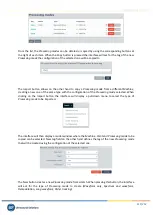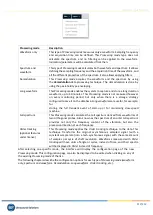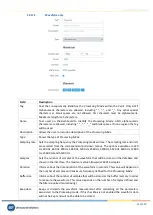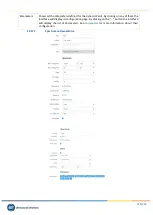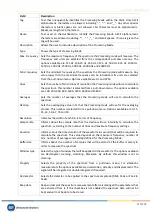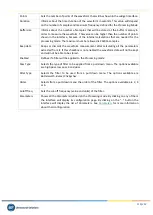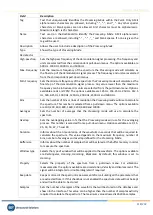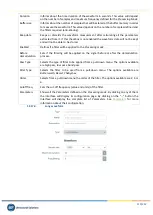
Vigilant User Manual
104/232
Angle position
For a dynamic
Point
this field sets the angle at which the sensor is positioned. An angle
of 0° corresponds to a top vertical position. Angle direction can be selected clockwise
(R) or counterclockwise (L). Angle references are typically set by looking from the driver
side of the machine to the driven part. The system does not allow defining two points
associated to the same component with identical or parallel angle positions.
Spin direction
Rotation direction of the shaft the
Point
is connected to.
Fault
frequencies
Selects the different fault frequencies
assigned to the
Point,
both those that were
custom defined by the user in the
Fault frequencies
section, and also those related to
the
Bearings
. The fault frequencies applied to the point will then be visible in the
Spectrum
widget, in the
Dashboard
, so that they can be easily identified.
Hide
label
(Mimic label)
Sets the location that the Point will take on the picture associated with the Machine
and that will be shown on the Mimic widget of the Dashboard. Clicking on the picture
places the label on that spot. The rest of the Point locations will be also shown on the
picture, with a different format, to help select the location of the Point being
configured. Activating the checkbox will hide the point on the Mimic widget.
Input
Selects the input channel the
Point
will get the data from.
Speed factor
Factor that will be used to calculate the speed associated with the
Point
and its
measurements. It is calculated by multiplying the
Machine
speed by the value in this
field.
Unit
Shows the units associated with the
Point
. The units are defined by the sensor
configured for the corresponding input channel.
Processing
modes
Shows all the
Processing modes
defined for the dynamic
Point
. By clicking on any of
them the interface will display its configuration page. Clicking on the “...” button the
interface will display the list of
Processing modes
. See
Processing Modes
for more
information about their configuration.
12.16.2.
Static points
Depending on its data source,
Static points
are classified by the following types:
•
Input
: these types of
Static points
get the data from a physical input of the unit. The
corresponding input channel must have been configured as
Voltage
or
Digital
on its
Input
Mode
.
•
Modbus
: these
Static points
get the data digitally, from an external
Modbus-TCP
server.
•
OPC
: these
Static points
get the data digitally, from an external
OPC
server.
•
Formula
: these
Static points
get its data from an expression or formula defined by the user,
which can include any measurement read by the
system
, internal variables (e.g. timers,
speed/load variation) and different arithmetic and logical operators.

